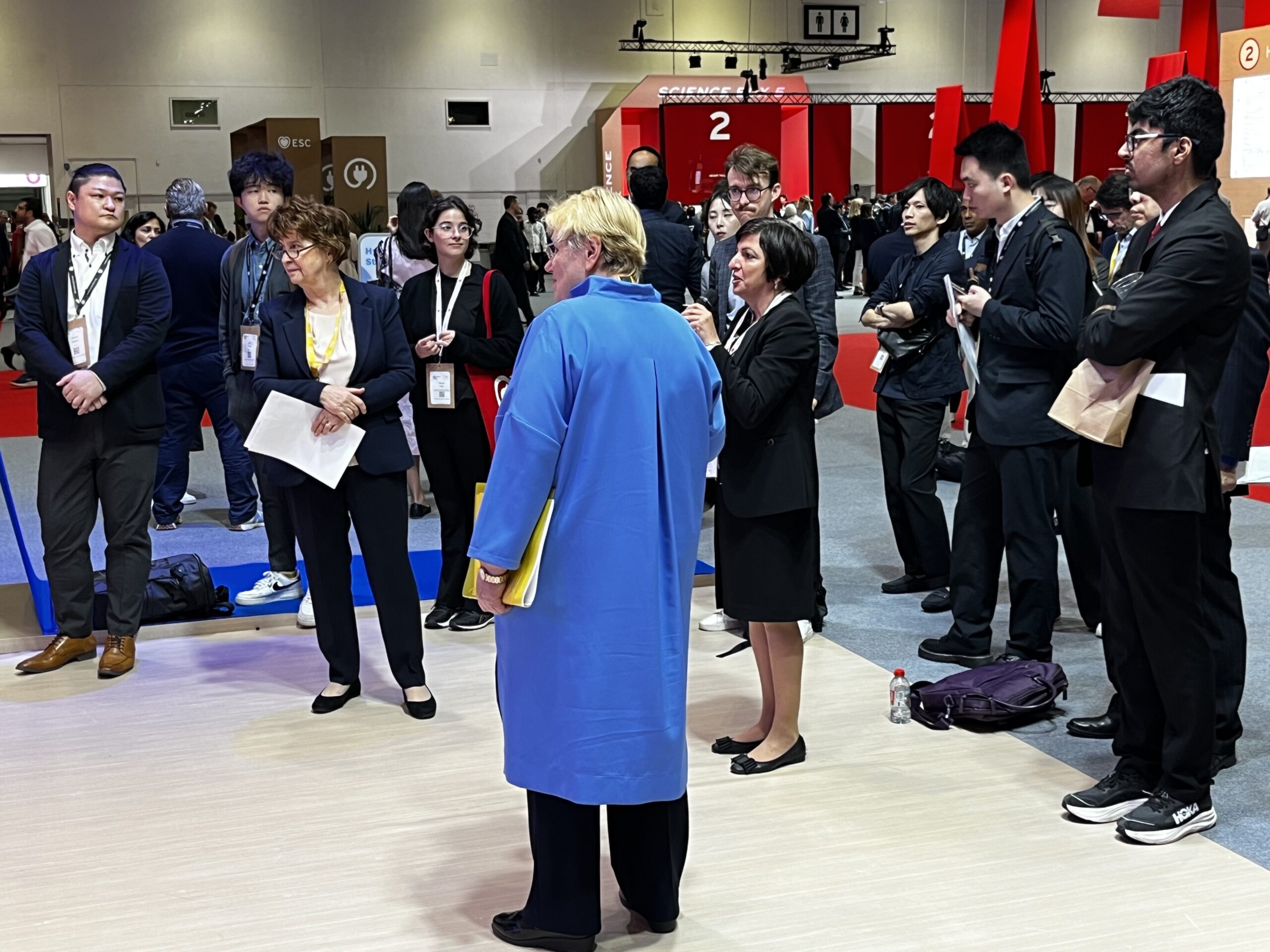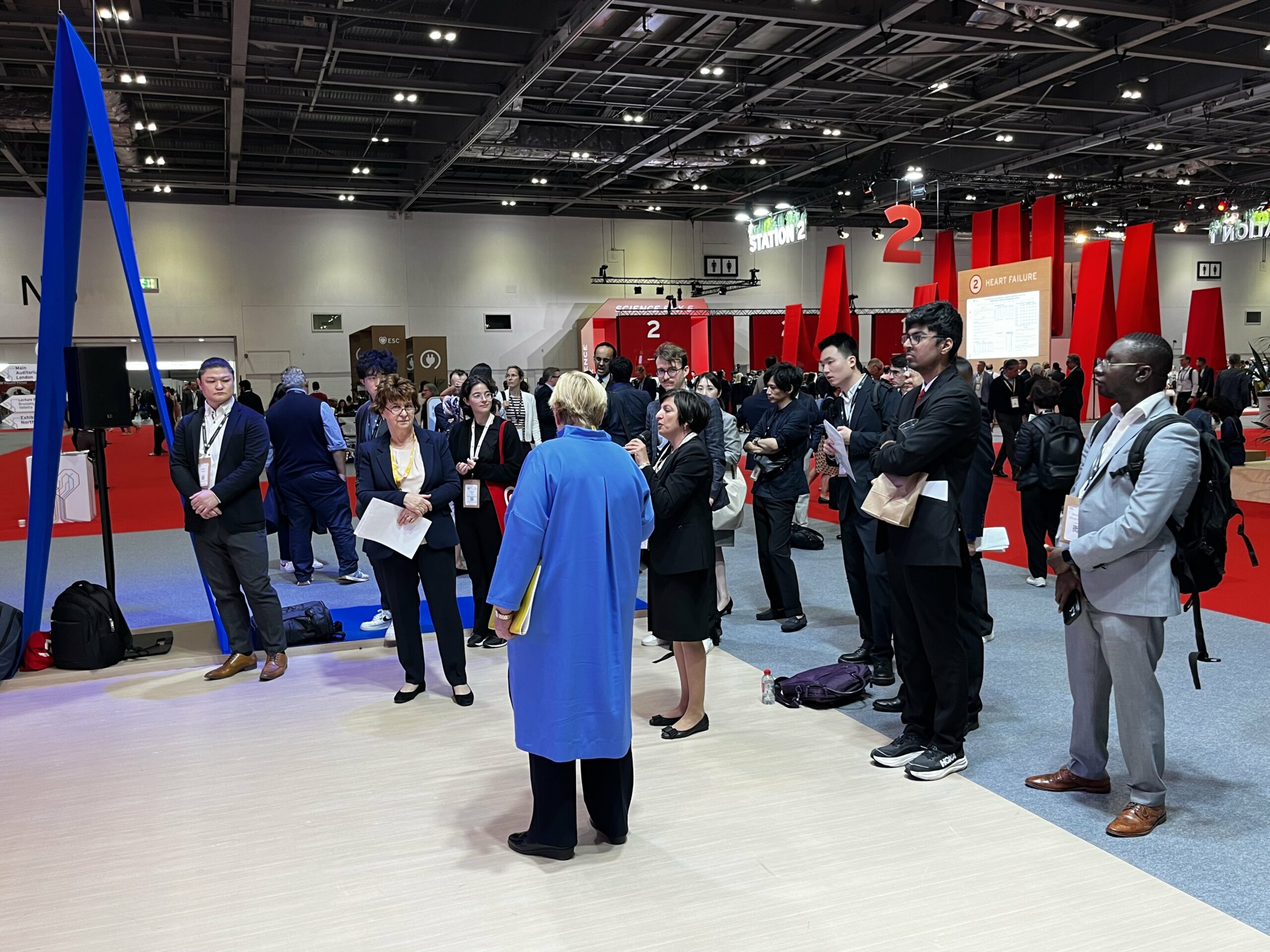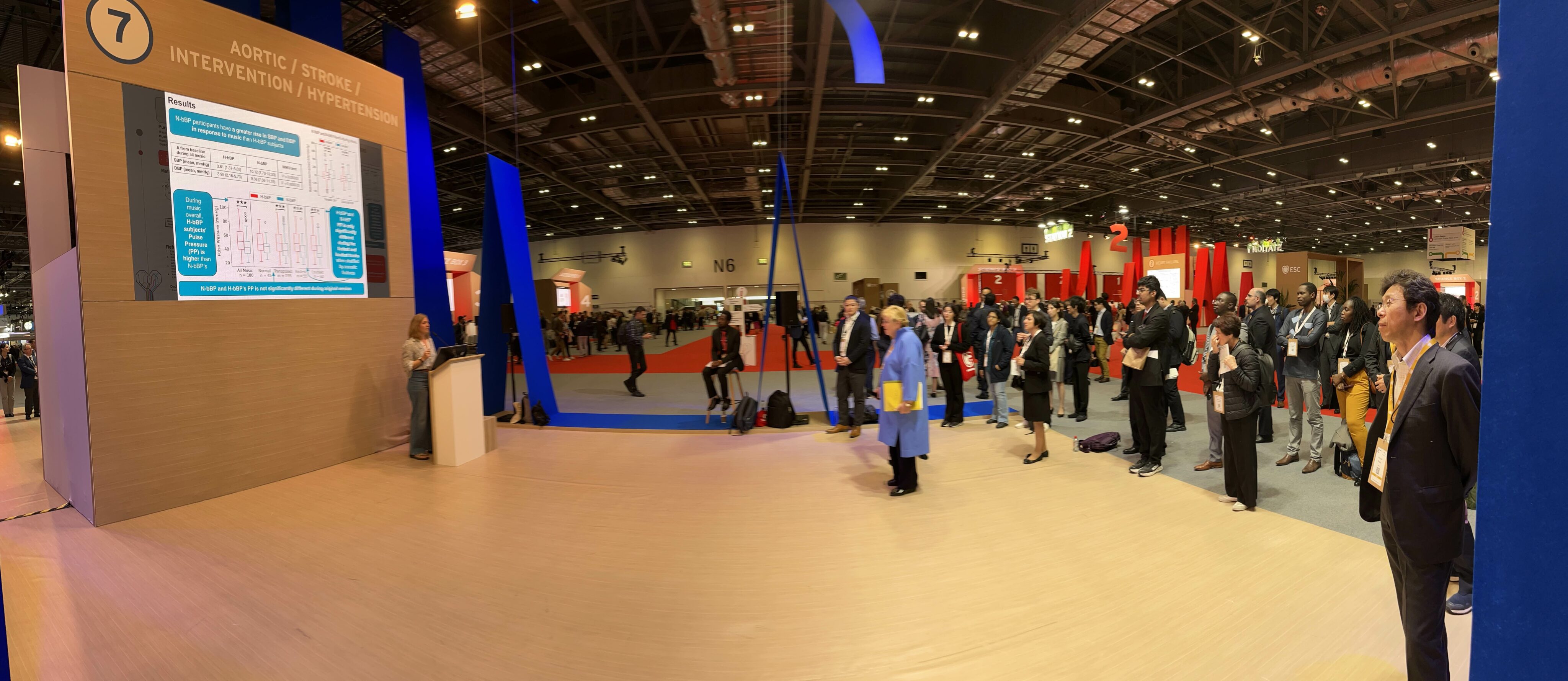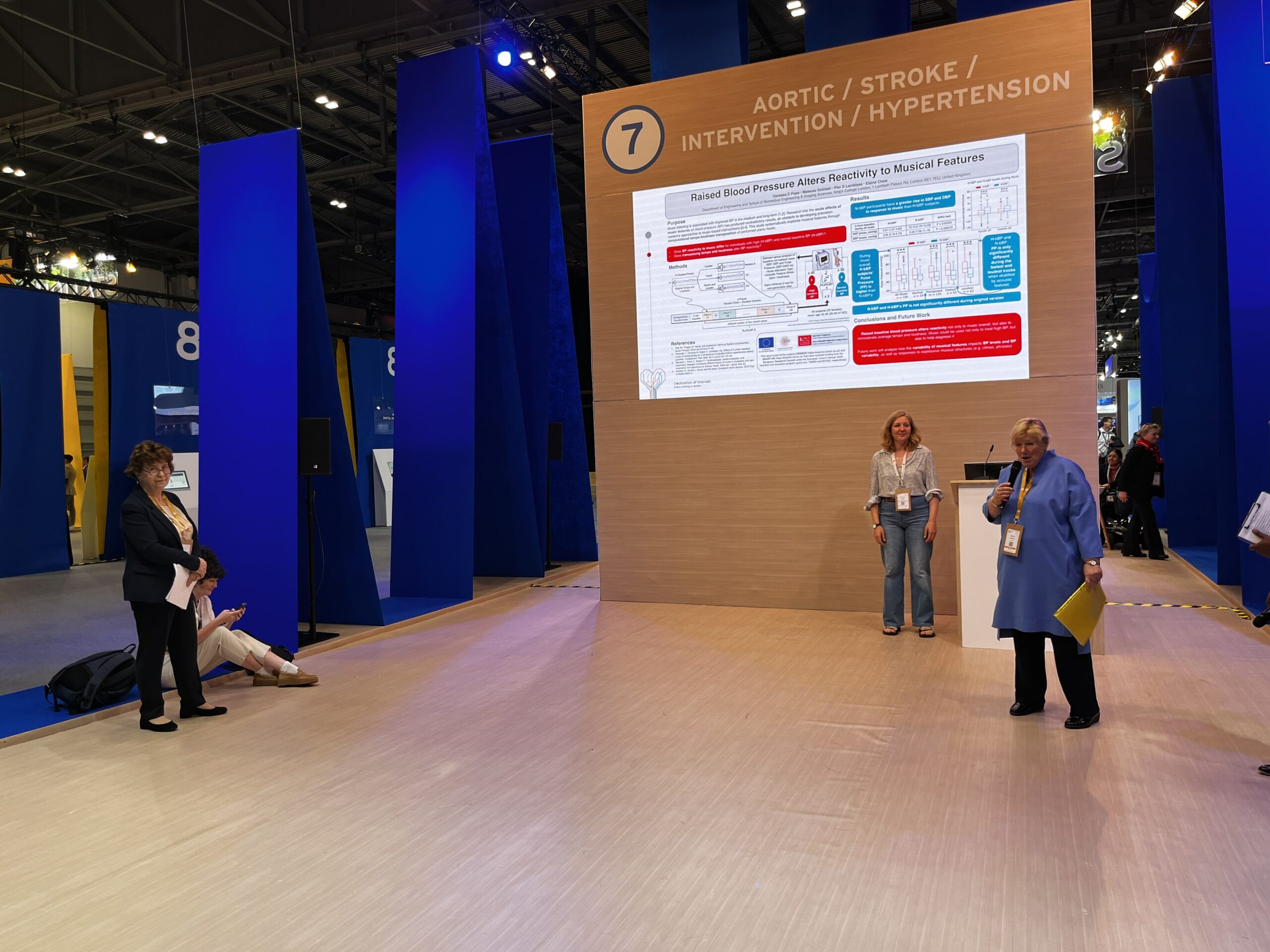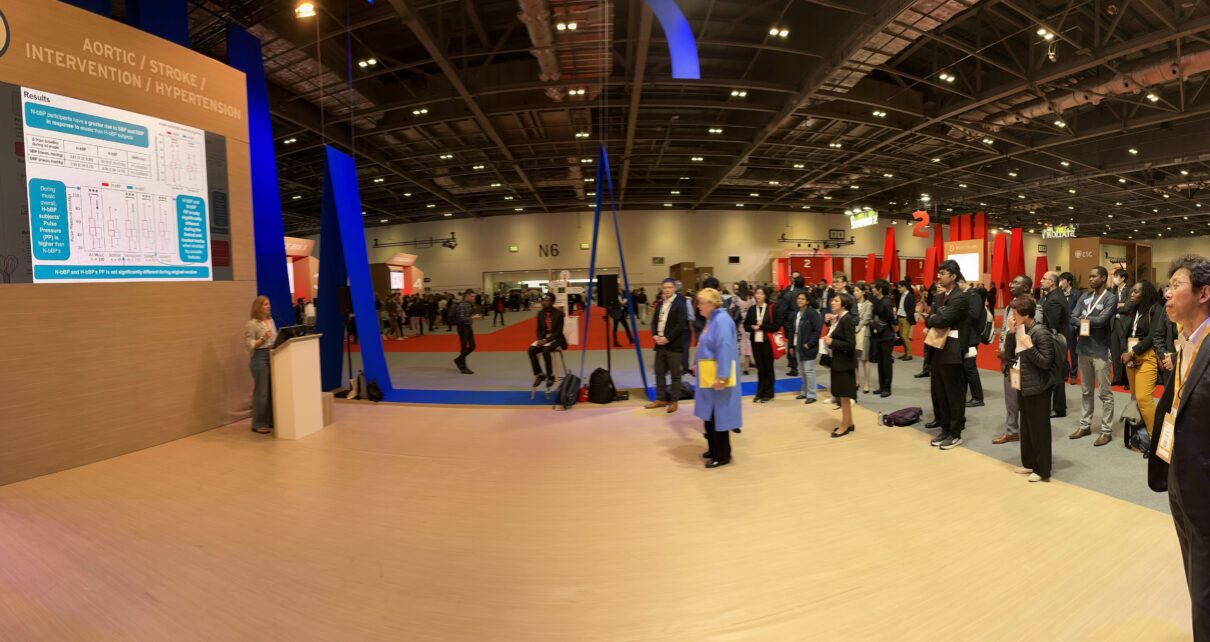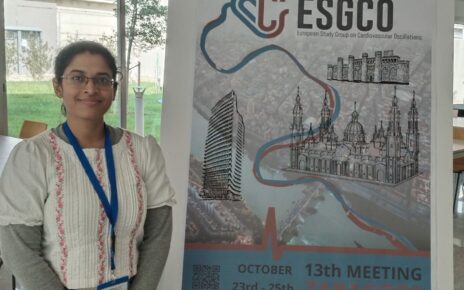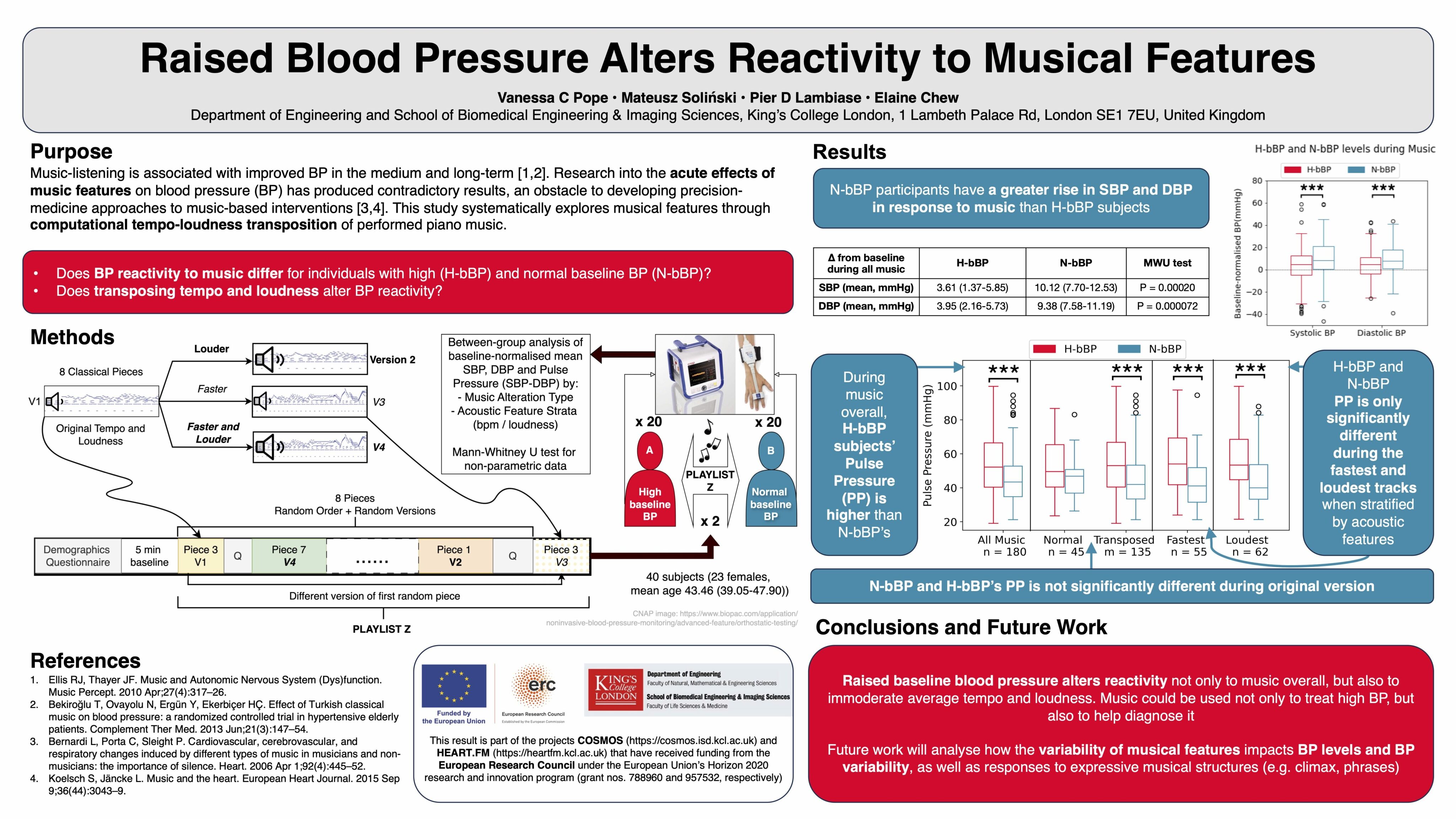
Vanessa Pope presents some first findings from HeartFM Study “Raised Blood Pressure Alters Reactivity to Music Features” at the Session on Hypertension: lifestyle and environment on Saturday, 31 August, at the European Society of Cardiology Congress at the Excel Centre in London.
Pope, V, M Soliński, P Lambiase, E Chew (2024). Raised blood pressure affects reactivity to expressive music features. European Society of Cardiology (ESC) Congress, London, UK.
Raised blood pressure affects reactivity to expressive music features
Authors:
V Pope 1 , M Solinski 1 , P Lambiase 2 , E Chew 1 , 1 King’s College London – London – United Kingdom of Great Britain & Northern Ireland , 2 University College London – London – United Kingdom of Great Britain & Northern Ireland ,
Background: Music has been shown to lower hypertensive patients’ blood pressure in the long-term, but predominant approaches overlook the wide range of complex real-time responses. Mapping the acute dynamics of music features can help discern blood pressure (BP) reactivity. Understanding the mechanisms of music BP effects can broaden the scope for precision medicine.
Purpose: The aims of this study are to determine: (1) if reshaped music features alter BP reactivity; and, (2) whether BP reactivity differs for individuals with high and normal BP.
Methods: Participants listened to music with computationally altered tempo and loudness played back on a Disklavier piano. We compared continuous BP measurements in 40 participants (23 females, mean age of 41.3 y (95%CI: 37.2-45.4)), 20 with baseline BP measurement above 140/90 mmHg (H-bBP) and 20 with bBP below (N-bBP), paired by playlist. Continuous BP was recorded while listening to a playlist of 9 reshaped versions of 8 distinct pieces (≈40 min) after a 5-minute baseline silence.
Results: The mean increase in systolic and diastolic BP during music (reactivity) was significantly higher for N-bBP than H-bBP (mean (95%CI); mmHg): systolic 8.6 (6.2-11.1) vs 5.0 (2.7-7.3); p=0.031; diastolic 7.7 (5.9-9.5) vs 4.6 (2.9-6.3); p=0.0046. No significant difference in pulse pressure (PP) reactivity was found; however, the N-bBP subjects had significantly lower mean PP during music than H-bBP subjects (45.2 (40.2-44.8) vs 54.2 (51.7-56.7) ; p<0.001).
Based on mean tempos, N-bBP subjects had significantly lower average PP than H-bBP subjects during slow (<60bpm; 44.6 (40.6-48.6) vs 52.6 (48.9-56.3); p=0.016) and fast (>120bpm; 43.9 (39.9-47.9) vs 57.2 (52.9-61.5); p<0.001) music, though not medium pace music. Similarly, N-bBP participants had significantly lower PP during quiet (<13 dB; 44.0 (39.6-48.4) vs 55.7 (50.7-60.7); p<0.001) and loud (>17 dB; 44.0 (39.6-48.4) vs 55.5 (51.1-59.9); p<0.001) music, but not during moderately loud music. H-bBP and N-bBP participants’ PP measures are more similar during moderately fast and moderately loud music. In addition, N-bBP’s baseline-normalised mean PP was significantly lower only during fast music (3.3 (-2.3-8.6) vs 12.9 (6.9-18.9); p = 0.04).
Separating responses to unaltered vs reshaped music––i.e. music made faster and/or louder, in the case of one piece, slower and/or quieter––significant differences are found between N-bBP and H-bBP groups only for reshaped music in baseline-normalised diastolic BP (6.8 (4.7-8.9) vs 3.9 (2.1-5.7); p=0.02) and PP (45.0 (42.2-47.8) vs 54.8 (51.8-57.8); p<0.001). Conclusions: H-bBP subjects had less BP reactivity to music, especially in resting vascular tone PP. Reshaping of music can modulate the level of differences between groups, particularly for immoderate tempo and loudness. Music can induce significant changes in BP profile, which indicates that it could potentially be utilised as a tailored anti-hypertensive therapy.
